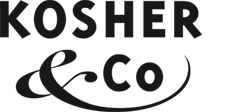
New York Bagels with Salmon
While the Empire State Building or the Statue of Liberty represent New York City’s architecture, the bagel is its culinary landmark.
The bread with the hole in the middle was brought to New York by the Jewish immigrants who after 1880 fled from the pogroms in czarist Russia and Poland. Of course at the time it was known by its Yiddish name "bejgl." These immigrants opened small bakeries, mostly on the Lower East Side, where they produced bagels by hand. It was not until the 1960s that a machine was invented to mass produce bagels and they became popular throughout the United States.
Even though the bagel has long been adopted by New Yorkers of miscellaneous origin, it has preserved its reputation for being a traditional Jewish food. This can be seen by the fact that even non-Jews will order their bagel with cream cheese and salmon, two typical Jewish accessories called "lox" and "shmear" in Yiddish.
By the way, there is an interesting theory behind these typical toppings. Some people believe that the combination of cream cheese and smoked salmon – which looks like ham – is a subliminal challenge to the Jewish dietary laws, which prohibit eating meat and dairy products together.
Yiddish, everyday language of Eastern European Jews, with German, Hebrew and Slavic elements.





